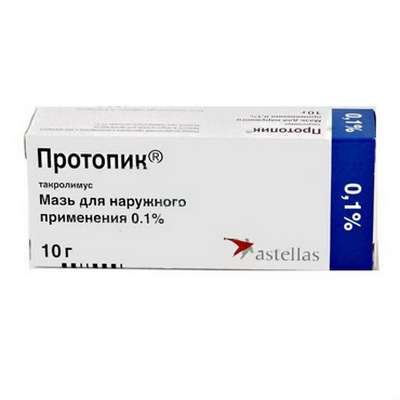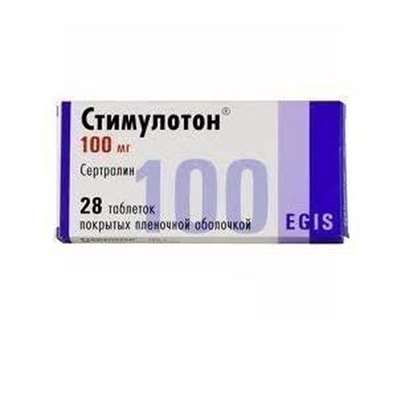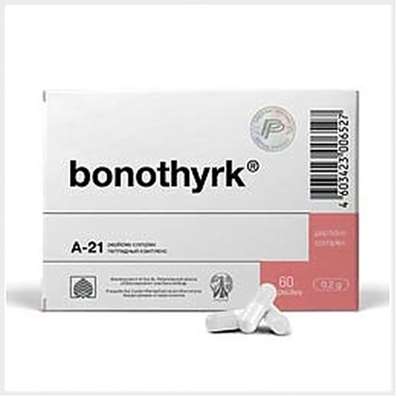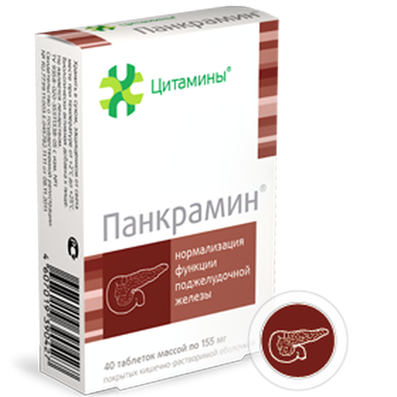Instruction for use: Tisercin
I want this, give me price
Dosage form: tablets
Active substance: Levomepromazine*
ATX
N05AA02 Levemepromazine
Pharmacological group:
Neuroleptics
The nosological classification (ICD-10)
F20 Schizophrenia: Schizophrenic Conditions; An exacerbation of schizophrenia; Schizophrenia; Chronic schizophrenia; Dementia praecox; Bleuler's disease; Psychotic discordant; Dementia early; The febrile form of schizophrenia; Chronic schizophrenic disorder; Psychosis of the schizophrenic type; Acute form of schizophrenia; Acute schizophrenic disorder; Cerebral Organic Insufficiency in Schizophrenia; Acute attack of schizophrenia; Schizophrenic psychosis; Acute schizophrenia; Sluggish schizophrenia; Sluggish schizophrenia with apathoabulic disorders; Acute stage of schizophrenia with agitation
F28 Other Inorganic Psychotic Disorders: Affective psychoses; Involutional psychosis; Psychoinstrumental; Psycho senile; Psychic senile; Senile psychosisl; Structural Involutionary Psychosis; Static psychosis
F29 Inorganic psychosis, unspecified: Childhood psychoses; Psychomotor agitation in psychoses; Hallucinatory-delusional disorders; Hallucinatory-delusional syndrome; Intoxication psychosis; Manic-delusional disorders; Manic chronic psychosis; Manic psychosis; Acute psychosis; Paranoid psychosis; Subacute psychosis; Presenile psychosis; Psychosis; Intoxication psychosis; Psychosis is paranoid; Psychosis in children; Reactive psychosis; Chronic psychosis; Chronic hallucinatory psychosis; Chronic psychosis; Chronic psychotic disorder; Schizophrenic psychosis
F31 Bipolar affective disorder: Mood disorders bipolar; Affective bipolar psychosis; Manic-melancholic psychosis; Intermittent psychosis; Circular psychosis; Cyclophrenia; Bipolar disorders; Bipolar disorders; Bipolar psychosis; Affective insanity; Manic-depressive syndrome; Psycho Manic-Depressive; Depressive episode of bipolar disorder
F40.9 Phobic anxiety disorder, unspecified: Phobic disorders; Phobias; Anxiety neurosis; Anxiety of anxiety; Obsessive fears; Feeling of fear; Acute anxiety disorder; Paroxysmal fear syndrome
F41.0 Panic disorder [episodic paroxysmal anxiety]: Panic state; Panic attack; Panic; Panic disorders
F41.9 Unspecified anxiety disorder: Neurotic disorders with anxiety syndrome; Severe anxiety; Neurosis-like symptoms; Neuro-like disorders; Neuro-like conditions; Neuroses with anxiety symptoms; Neuroses with a sense of anxiety; Acute situational and stress anxiety; Acute attack of anxiety; Abrupt anxiety; Situational Anxiety Disorder; State of anxiety; Anxious-delirious component; Alarming state; Anxiety; Anxiety Disorders; Anxiety syndrome; Sense of anxiety; Alarm states; Chronic neurotic anxiety; Susto; Psychopathy with a predominance of anxiety and anxiety; Anxiety disorders in neurotic and neurosis-like states; Anxious neuroses; Anxious and delusional state; Acute situational stress alarm; Depressed mood with elements of anxiety
F51.0 Insomnia of inorganic etiology: Situational insomnia; Situational sleep disorders
F79 Mental retardation, unspecified: Mental retardation; Infantilism mental; Violation of mental activity; Oligophrenia; Lag behind mental development; Slowed development of intellectual abilities in children and adolescents; Delayed mental development in children; Maloumia; Oligopsihia; Mental failure; Impaired mental function; Lag behind in mental development; Lack of intellectual development in children; Lack of mental development in children; Mental retardation; Lack of mental development in children; Mental retardation
F99 Unspecified mental disorders: Psychosis in children; Mental disturbance; Violation of mental activity; Psychoses of childhood
G47.0 Sleep disturbance and sleep disturbances [insomnia]: Insomnia; Insomnia, especially the difficulty of falling asleep; Desynchronosis; Prolonged sleep disorder; Difficulty falling asleep; Insomnia; Short-term and transient sleep disorders; Short-term and chronic sleep disorders; Short or shallow sleep; Disturbance of falling asleep; Sleep disturbance, especially in the phase of falling asleep; Sleep disturbances; Sleep Disorders; Neurotic sleep disorder; Shallow shallow sleep; Shallow sleep; Unsatisfactory quality of sleep; Night Awakening; The pathology of sleep; Postmodern violation; Transient insomnia; Problems with falling asleep; Early Awakening; Early morning awakening; Early Awakenings; Sleep disorder; Persistent insomnia; Difficult to fall asleep; Difficulty falling asleep in children; Difficulty falling asleep; Persistent insomnia; Deterioration of sleep Chronic insomnia; Frequent nocturnal and / or early morning awakenings; Frequent nocturnal awakenings and a feeling of shallow sleep; Night Awakenings
G50.0 Trigeminal neuralgia: trigeminal neuritis; Painful tic; Idiopathic neuralgia of the trigeminal nerve; Neuralgia of the trigeminal nerve; Essential neuralgia of the trigeminal nerve; Pain syndrome in trigeminal neuralgia; Painful tic; Trigeminal neuralgia; Neuralgia of the trigeminal nerve
G51 Lesions of the facial nerve: Neuralgia of the facial nerve; Neuritis of the facial nerve; Paralysis of the facial nerve; Pain syndrome with neuritis of the facial nerve; Peripheral paralysis of the facial nerve; Paresis of the facial nerve
R45.1 Anxiety and agitation: Agitation; Anxiety; Explosive excitability; Internal stimulation; Excitability; Excitation; Excitation acute; Psychomotor agitation; Hyperexcitability; Motor excitement; Cessation of psychomotor agitation; Nervous excitement; Restlessness; Night trouble; Acute stage of schizophrenia with agitation; Acute mental agitation; Paroxysm of excitation; Overexcitation; Increased excitability; Increased nervous excitability; Increased emotional and cardiac excitability; Increased agitation; Mental arousal; Psychomotor agitation; Psychomotor agitation in psychoses; Psychomotor agitation of an epileptic nature; Psychomotor paroxysm; Psychomotor fit; Symptoms of Excitation; Symptoms of psychomotor agitation; The state of agitation; A state of anxiety; Excitation status; A state of heightened concern; The state of psychomotor agitation; Conditions of anxiety; Excitation conditions; The state of excitement in somatic diseases; Excitation level; Feelings of anxiety; Emotional arousal
R52.9 Unspecified pain: Pain after cholecystectomy; Pain shooting; Non-malignant pain syndrome; Obstetric and gynecological pain; Pain syndrome; Pain syndrome in the postoperative period; Pain syndrome in the postoperative period after orthopedic operations; Painful syndrome of inflammatory genesis; Pain syndrome of non-oncological genesis; Pain syndrome after diagnostic procedures; Pain syndrome after the diagnostic intervention; Pain syndrome after operations; Pain syndrome after surgery; Pain syndrome after orthopedic surgery; Pain syndrome after trauma; Pain syndrome after removal of hemorrhoids; Pain syndrome after surgery; Pain syndrome with inflammation of non-rheumatic nature; Pain syndrome with inflammatory lesions of the peripheral nervous system; Pain syndrome in diabetic neuropathy; Pain syndrome in acute inflammatory diseases of the musculoskeletal system; Pain syndrome in the pathology of tendons; Pain syndrome with smooth muscle spasms; Pain syndrome with smooth muscle spasms (renal and biliary colic, intestinal spasm, dysmenorrhea); Pain syndrome with spasms of smooth muscles of internal organs; Pain syndrome with spasms of smooth muscles of internal organs (renal and biliary colic, intestinal spasm, dysmenorrhea); Pain syndrome with injuries; Pain syndrome with injuries and after surgical interventions; Pain syndrome in chronic inflammatory diseases of the musculoskeletal system; Pain syndrome with duodenal ulcer; Pain syndrome with peptic ulcer disease; Pain syndrome with peptic ulcer of stomach and duodenum; Painful sensations; Pain during menstruation; Pain syndromes; Painful conditions; Painful leg fatigue; Gum pain when wearing dentures; The pain of exit points of cranial nerves; Painful irregular menstruation; Painful dressings; Painful muscular spasm; Painful growth of teeth; Pain; Pain in lower limbs; Pain in the area of the operating wound; Pain in the postoperative period; Pain in the body; Pain after diagnostic interventions; Pain after orthopedic surgery; Pain after surgery; Pain in the flu; Pain in diabetic polyneuropathy; Pain in burns; Pain in intercourse; Pain during diagnostic procedures; Pain during therapeutic procedures; Pain for colds; Pain with sinusitis; Pain in case of injury; Pain of a traumatic nature; Pain in the postoperative period; Pain after Diagnostic Interventions; Pain after sclerosing therapy; Pain after surgery; Postoperative pain; Postoperative and post-traumatic pain; Post-traumatic pain; Pain when swallowing; Pain in infectious inflammatory diseases of the upper respiratory tract; Pain with burns; Pain with traumatic muscle damage; Pain in case of injury; Pain when extracting a tooth; Pain of traumatic origin; Pain caused by spasm of smooth muscles; Severe pain syndrome; Severe pain syndrome of traumatic origin; Postoperative pain; Postoperative pain syndrome; Post-traumatic pain; Post-traumatic pain syndrome; Torpid pain syndrome; Traumatic pain; Moderate pain; Moderately expressed pain syndrome; Moderate pain syndrome; Polyartralgia in polymyositis
Z100.0 * Anesthesiology and premedication: Abdominal surgery; Adenomectomy; Amputation; Angioplasty of the coronary arteries; Carotid artery angioplasty; Antiseptic treatment of skin in wounds; Antiseptic treatment of hands; Appendectomy; Atheroctomy; Balloon coronary angioplasty; Vaginal hysterectomy; Venous bypass; Interventions on the vagina and cervix; Interventions on the bladder; Interference in the oral cavity; Reconstructive-reconstructive operations; Hand hygiene of medical personnel; Gynecological Surgery; Gynecological interventions; Gynecological operations; Hypovolemic shock during surgery; Disinfection of purulent wounds; Disinfection of the edges of wounds; Diagnostic Interventions; Diagnostic procedures; Diathermocoagulation of the cervix; Long-term surgeries; Replacement of fistulous catheters; Infection in orthopedic surgical interventions; Artificial heart valve; Kistectomy; Short-term outpatient surgery; Short-term operations; Short-term surgical procedures; Cryotyreotomy; Blood loss during surgical interventions; Bleeding during surgery and in the postoperative period; Laser coagulation Laserocoagulation; Laser retinopathy of the retina; Laparoscopy; Laparoscopy in gynecology; Likvornaya fistula; Small gynecological operations; Small surgical interventions; Mastectomy and subsequent plastic surgery; Mediastinotomy; Microsurgical operations on the ear; Mukinging operations; Suturing; Minor surgery; Neurosurgical operation; Eclipse of the eyeball in ophthalmic surgery; Orchiectomy; Pancreatectomy; Pericardectomy; The rehabilitation period after surgical operations; Reconvalence after surgical intervention; Percutaneous transluminal coronary angioplasty; Pleural Thoracocentesis; Pneumonia postoperative and post traumatic; Preparing for surgical procedures; Preparing for a surgical operation; Preparation of the surgeon's arms before surgery; Preparation of the colon for surgical interventions; Postoperative aspiration pneumonia in neurosurgical and thoracic operations; Postoperative nausea; Postoperative hemorrhage; Postoperative granuloma; Postoperative shock; Early postoperative period; Myocardial revascularization; Resection of the apex of the tooth root; Resection of the stomach; Bowel resection; Resection of the uterus; Liver resection; Small bowel resection; Resection of a part of the stomach; Reocclusion of the operated vessel; Gluing of tissues during surgical interventions; Suture removal; Condition after eye surgery; Condition after surgery in the nasal cavity; Condition after gastrectomy; Condition after resection of the small intestine; Condition after tonsillectomy; Condition after removal of duodenum; Condition after phlebectomy; Vascular Surgery; Splenectomy; Sterilization of surgical instrument; Sterilization of surgical instruments; Sternotomy; Dental surgery; Dental intervention on periodontal tissues; Strumectomy; Tonsillectomy; Thoracic surgery; Total gastrectomy; Transdermal intravascular coronary angioplasty; Transurethral resection; Turbinectomy; Removal of a tooth; Cataract removal; Removing Cysts; Removal of tonsils; Removal of myoma; Removal of mobile milk teeth; Removal of polyps; Removal of a broken tooth; Removal of the uterus; Removal of seams; Urethrotomy; Fistula of the luminal ducts; Frontoetmoidogamotomy; Surgical infection; Surgical treatment of chronic ulcers of extremities; Surgery; Surgery in the anus; Surgery on the large intestine; Surgical practice; Surgical procedure; Surgical interventions; Surgical interventions on the digestive tract; Surgical interventions on the urinary tract; Surgical interventions on the urinary system; Surgical interventions on the genitourinary system; Surgical intervention on the heart; Surgical procedures; Surgical operations; Surgical operations on veins; Surgical intervention; Vascular Surgery; Surgical treatment of thromboses; Cholecystectomy; Partial resection of the stomach; Extraperitoneal hysterectomy; Percutaneous transluminal coronary angioplasty; Percutaneous transluminal angioplasty; Coronary artery bypass grafting; Extirpation of the tooth; Extirpation of infant teeth; Extirpation of pulp; Extracorporeal circulation; Extraction of the tooth; Extraction of teeth; Extraction of cataracts; Electrocoagulation; Endourological interventions; Episiotomy; Ethmoidotomy; Complications after tooth extraction
Composition
Tablets, coated with a coating.
active substance:
levomepromazine 25 mg
(equivalent to 33.8 mg of levomepromazine hydro-maleate)
auxiliary substances: magnesium stearate - 1 mg; sodium starch glycolate - 2 mg; povidone - 8 mg; MCC - 10 mg; potato starch - 15.2 mg; lactose - 40 mg
shell: hypromellose - 2,632 mg; titanium dioxide - 0.758 mg; Dimethicone - 0.355 mg; magnesium stearate 0.255 mg
Solution for infusion and intramuscular injection 1 amp.
active substance:
levomepromazine 25 mg
auxiliary substances: citric acid anhydrous - 9 mg; monothioglycerol - 7.5 mg; sodium chloride - 6 mg; water for injection - up to 1 ml
Pharmachologic effect
The pharmacological action is neuroleptic.
Dosing and Administration
Tablets
Inside, starting with a daily dose of 25-50 mg, in several ways (the maximum part of the daily dose should be prescribed before bedtime), increasing it daily by 25-50 mg until the patient's condition improves. In patients resistant to other neuroleptics, the daily dose can be increased faster, adding 50-75 mg / day. The average daily doses are 200-300 mg.
After the patient's condition is improved, the dose should be reduced to a maintenance dose, the value of which is determined individually.
In outpatient practice, patients with neurotic disorders are prescribed in a daily dose of 12.5-50 mg (1 / 2-2 table).
Patients with psychoses, with expressed psychomotor agitation, it is advisable to begin therapy with levomepromazine from parenteral administration.
To prevent the development of orthostatic collapse during treatment requires compliance with bed rest.
Solution for infusion and IM administration
IV, IM. Parenteral administration is used when it is not possible to take the drug inside.
The usual daily dose is 75-100 mg (for 2-3 injections) in bed conditions under the control of blood pressure and pulse. If necessary, the daily dose is increased to 200-250 mg. With the / m introduction the drug should be injected deep into the muscle. Apply also iv drip infusions, for which the drug Tizerzin® should be diluted - (50-100 mg drug in 250 ml of 0.9% solution of sodium chloride or 5% solution of dextrose (glucose) - and injected slowly through a dropper.
Clinical experience in the parenteral use of levomepromazine in children under 12 years is not enough. In the presence of strict indications, children over 12 years of age are recommended doses from 0.35 mg / kg / day to 3 mg / kg / day.
Release form
Tablets coated with a coating, 25 mg. For 50 tables. in a bottle of brown glass with a PE-cover, with the control of the first autopsy and a shock absorber. 1 f. in a cardboard box.
Solution for infusion and intramuscular injection, 25 mg / ml. 1 ml in ampoules of colorless hydrolytic glass type I, with red and blue code rings and a break point. At 5 amp. in a contoured cell pack sealed with a PVC film // PET / PE. 2 contour squares in a cardboard bundle.
Conditions of leave from pharmacies
On prescription.
Storage conditions for Tisercin
In the dark place at a temperature of no higher than 25 ° C.
Keep out of the reach of children.
Shelf life of Tisercin
solution for infusion and intramuscular injection of 25 mg / ml - 2 years.
tablets coated with 25 mg - 5 years.
Do not use after the expiry date printed on the package.

 Cart
Cart





